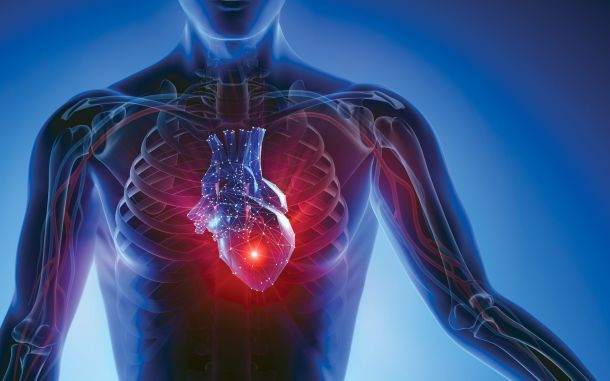Science Square (Issue 151)

In This Article
-
Harvesting freshwater from ocean vapor at a global scale
-
Gut-brain axis: Microbiome affects brain damage in neurodegenerative disorders
-
The living fossils of galaxy formation discovered
Harvesting freshwater from ocean vapor at a global scale
Rahman et al. Increasing freshwater supply to sustainably address global water security at scale. Scientific Reports, December 2022.
Water covers 70% of our planet, but the freshwater that we use for drinking, bathing, and irrigation is incredibly rare. Only 3% of the world’s water is freshwater, and 60% of that is frozen in glaciers, hence unavailable for use. Water scarcity is increasingly becoming a serious problem on every continent, with poorer countries most dramatically affected. A recent study proposed a new method of harvesting previously untapped sources of freshwater. There is an almost infinite supply of fresh water in the form of water vapor above the oceans, and scientists now want to design a new infrastructure to harvest it. The team evaluated 14 water-stressed locations across the globe and investigated the feasibility of a new structure that could capture water vapor from above the ocean and then condense it into freshwater. The proposed offshore structures are calculated to be standing 330 feet (100 meters) tall and 690 feet (210 meters) wide and would be placed several kilometers offshore to maximize their ability to collect water vapor. The structure would collect water vapor and send it through a pipe back to land, where it would condense into freshwater. In essence, evaporated moisture from the ocean is transported to land, cooled, condensed, and precipitated—very much like the natural water cycle. Interestingly, global warming causes more water evaporation and, consequently, more humidity is formed for capture. Thus, under a warmer climate, there will be more humidity available to meet humanity’s demand for water, making this approach feasible as the climate continues to change. This new method is substantially more environmentally friendly compared to other freshwater solutions such as desalination. Desalination plants produce brine, a salty chemical-filled mixture, as a waste product—one that can be toxic to wildlife. Water access solutions are urgently needed as about 2 billion people live in water-stressed regions—and that number may increase as climate change makes drought more common.
Gut-brain axis: Microbiome affects brain damage in neurodegenerative disorders
Seo et al. ApoE isoform– and microbiota-dependent progression of neurodegeneration in a mouse model of tauopathy. Science, January 2023.
It has been increasingly accepted that trillions of microbes living in our intestines, known as the “gut microbiome,” play a major role in many of our bodily functions. The two-way communication between the gut microbiome and brain can modify how these organs work through a complex network of microbe- and brain-derived chemical signals. Now, a new study suggests that the gut microbiome affects the behavior of immune cells in the brain that can damage brain tissue and exacerbate neurodegeneration. The researchers altered the gut microbiomes of mice predisposed to develop Alzheimer's-like brain damage and cognitive impairment and found that depletion of all gut microbiome through antibiotics dramatically reduced brain damage and slowed down the disease course in mice. Further experiments revealed that three specific short-chain fatty acids produced by gut bacteria activated the immune cells in the bloodstream, which in turn triggered the immune cells in the brain and led to tissue damage. This study suggests that gut microbes from our intestines may affect the onset or progression of neurodegenerative disorders like Alzheimer’s disease. It also opened new therapeutic avenues to preventing and treating neurodegenerative diseases by simply modifying the gut microbiome with specific antibiotics, probiotics, or specialized diets.
The living fossils of galaxy formation discovered
Rhoads et al. Finding Peas in the Early Universe with JWST. The Astrophysical Journal Letters, January 2023.
Astronomers have discovered the most primitive galaxies ever found using NASA’s recently established James Webb Space Telescope (JWST). The images captured are thought to originate from 700 million years after the Big Bang. In other words, its light has taken roughly 13 billion years to reach Earth. Three galaxies observed are categorized as “green pea” galaxies due to their small sizes and greenish hues. They are composed of brightly glowing gas clouds, hence the distinct color, and typically very small—they have a diameter of only 5,000 light-years, compared to the Milky Way, which is about 85,000 light-years across. Although these “green pea” galaxies are small, their star-formation activity is unusually intense for their size; they produce massive, bright ultraviolet light. The spectrographic analysis of the images by JSWT also revealed chemical fingerprints, which reveals a lot about the age of the galaxies. Two of the galaxies have around 20%—and the third one only 2%—of the oxygen in the Milky Way. The discovery of such ancient and distant galaxies is a significant development in cosmology. It has been established that after the Big Bang, the universe cooled down for a billion years before starting to reheat—also known as cosmic reionization, which ultimately led to the formation of modern galaxies. But we don’t know what was the catalyst for reionization. This study and some others strongly suggest that strong ultraviolet light emitted from these primitive galaxies, which can rip electrons from atoms, produced the energy required to transition from the cosmic dark age to cosmic reionization. JWST has the capacity to image early galaxies with unprecedented detail, paving the way for further progress to explore how galaxies form and evolve.









